Shutter speed
Shutter speed:
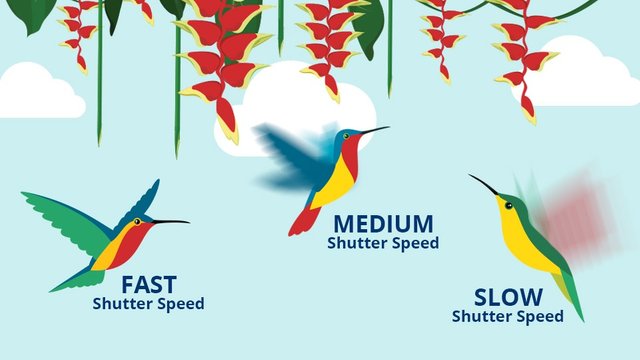
The amount of light available to work with, can determine if the photo will be too light, too dark or just correct.
There are 3 settings that can be set on the camera to control the light:
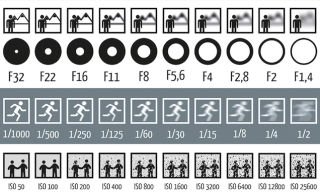
Example of aperture (at the top), shutter speed (middle) and ISO (bottom)
- The shutter speed- determines how long the sensor will be exposed to light
- The f-stop (aperture)- determines how much light will reach the sensor
- The ISO setting – Which determines how sensitive the sensor, will be for light.
These 3 factors work together to give a specific lighting for a photo, if one of them changes, the other two will be influenced directly.
The cameras’ built in lighting meter will also indicate if a photo is over or under exposed.
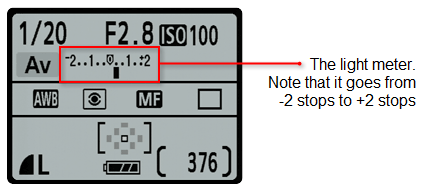
Now that we know most of the camera settings, we are able to take more creative photos and use more creative techniques. Now, we are going to look at the importance of the shutter speed and aperture and how creatively the photographer can use it.
1. What is shutter speed?
A shutter is a thin membrane that covers the sensor. When the shutter is open, light falls from outside on the sensor. The scale used is easier to understand as the aperture, because the speed is shown in parts of seconds.
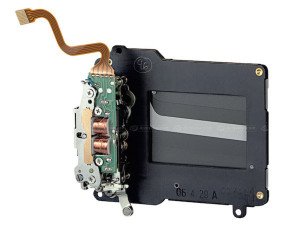
Common shutter speeds:
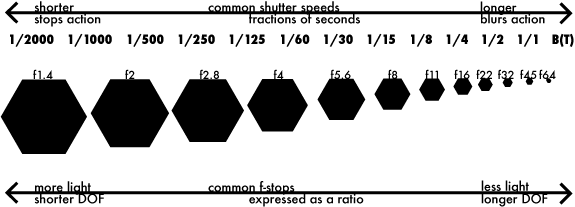
The time that the shutter stays open, is known as the shutter speed.
Shutter speed controls the result of the image as well as the amount of light that enters and reaches the sensor.
A faster shutter speed “freezes” the action and a slower shutter speed gives the feeling of movement.
Faster shutter speeds will give a sharper image because the chance for camera shake is less.
The slower the shutter speed, the more movement shows on the image.
On the bulb setting, the shutter stays open for as long as the photographer holds the shutter button in.
The shutter speed:
The shutter speed from 4000 to 4 indicates only a fraction/part of a second, for example:
Fast = 1/4000 1/3200 1/2500 1/2000 1/1600 1/1250 1/1000 1/800 1/640 1/500 1/400 1/320 1/250 1/200 1/160 1/125 1/100 1/80
Slower:1/60 1/50 1/40 1/25 1/20 1/15 1/13 1/10 1/8 1/6 1/5 ¼ 1/0”3 1/0”4 1/0”5 1/0”6 1/0”8
1” (second) 1”3 1”6
2” (two seconds) 2”5 3”2 4” 5” 6” 8” 10” 13” 15” 20” 25” 30” (very slow)
Lastly = bulb (as long as the shutter button is held in, the shutter will stay open)
A longer shutter speed allows more light to enter to fall on the sensor, while a faster shutter speed allows less light to enter.
The shutter speed is directly associated with movement.
Use the shutter speed of 1/60 and less if you want to capture the movement. (The camera must be on a tripod for this)
Use a faster shutter speed of 1/125 of faster if you want to freeze an image (show no movement)
If there are too much light, use a faster shutter speed like 1/250. If there are too little light, do the opposite.
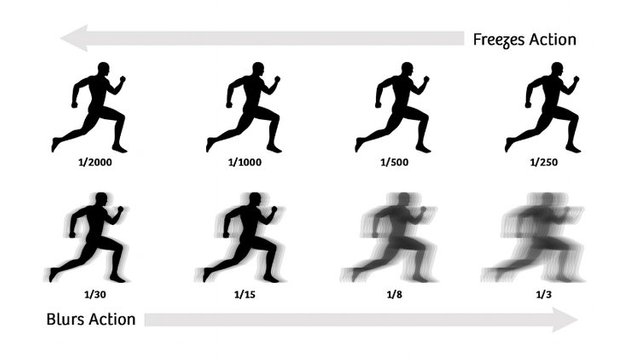
Direction of movement:
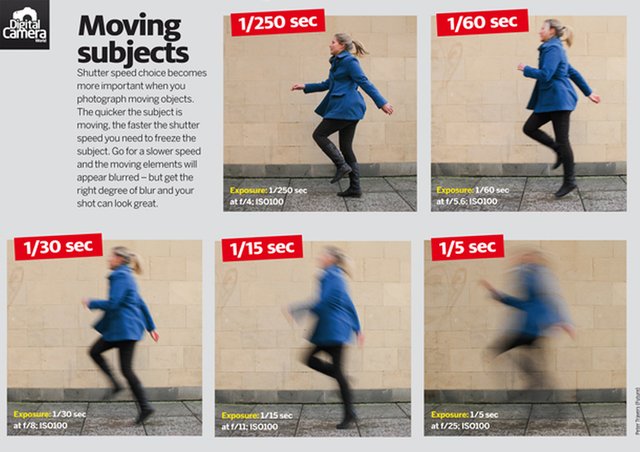
If an object is moving in the direction of the camera, use a slower shutter speed, if the object is moving away from the camera, use a faster shutter speed.

